First, we checked the existing artificial cover objects on-site for snakes....
The students then worked to measure out additions to our existing coverboard grid.
Few things make me happier than to see all 18 of these students working hard in the field and no one standing idle.
Let's face it....field work can be grueling (especially in the warm conditions we had while deploying the boards). But, this gives the students a small taste of less than ideal field conditions that one might face as a field ecologist. It's not all catching Cougars and Narwhals every second (or as a colleague here says...there's not a "gorilla behind every tree").
After the artificial cover objects were laid, we moved over to the creek and deployed some hoop traps for turtles.
........................................
The traps sat for a night, and a small group of volunteers came out with me the next morning to check and re-bait the traps.
Thankfully, we had more luck with turtles than with snakes.
Two large adult Snapping Turtles (Chelydra serpentina).....
Five cute little Painted Turtles (Chrysemys picta).......
We took our morphological measurments, such as carapace (or upper shell) length....
.........................................
The next day it was back to check the traps again, and this time the entire class was present.
...and once again, we had good fortune!
Day 2 yielded 14 painted turtles and one little snapper....a good haul!
Once again, appropriate morphological measurments were made....the turtles were given a permanent mark....and released back into the creek.
McDiarmid, R.W., et al. 2012 Reptile Biodiversity: standard methods for inventory and monitoring. University of California Press. Berkeley.
The following book is also a good introduction to standard reptile survey methods. Unfortunately, it's out-of-print, but you can still get it from libraries or through interlibrary loan.
Karns, D.R. 1986. Field Herpetology: methods for the study of amphibians and reptiles in Minnesota. Occassional Paper 18 of the James Ford Bell Museum of Natural History, University of Minnesota.

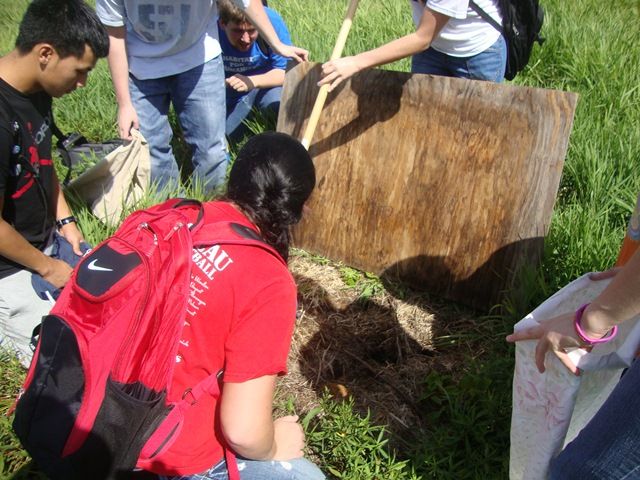
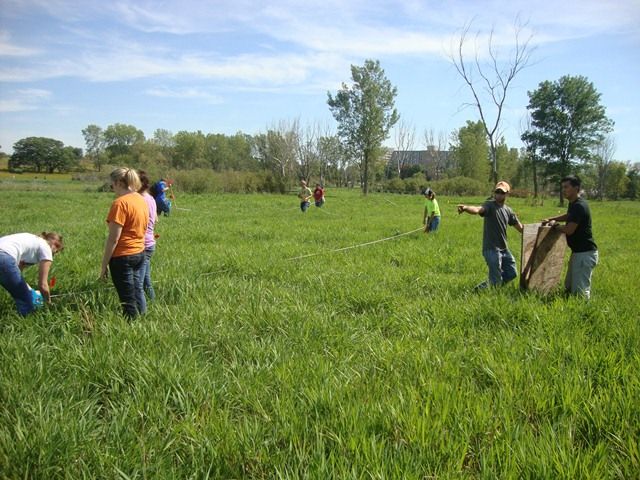
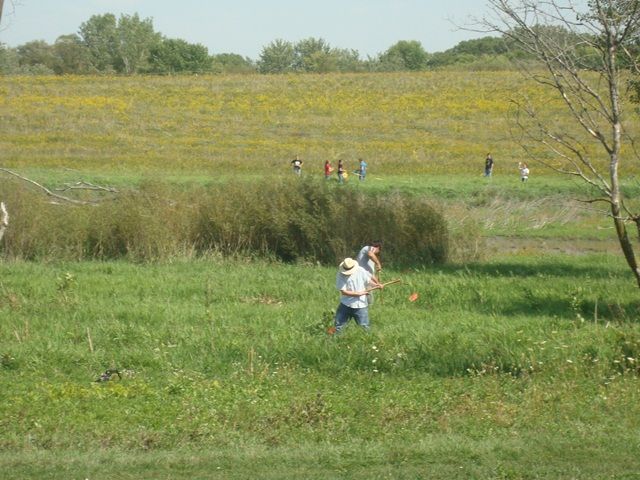

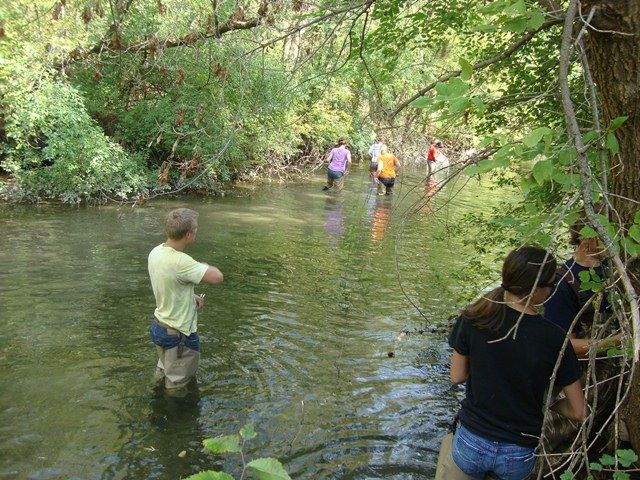
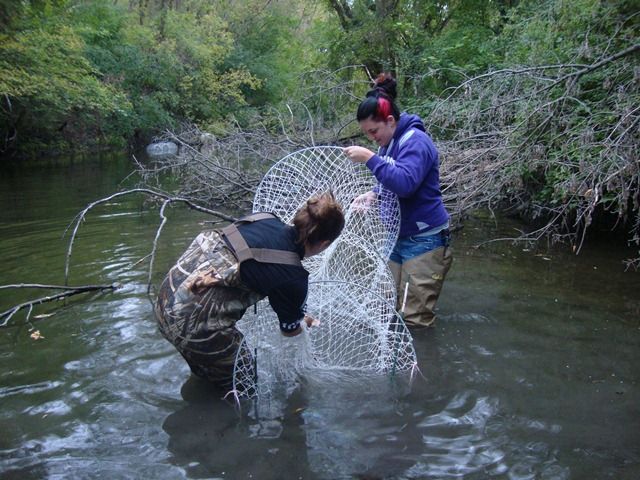
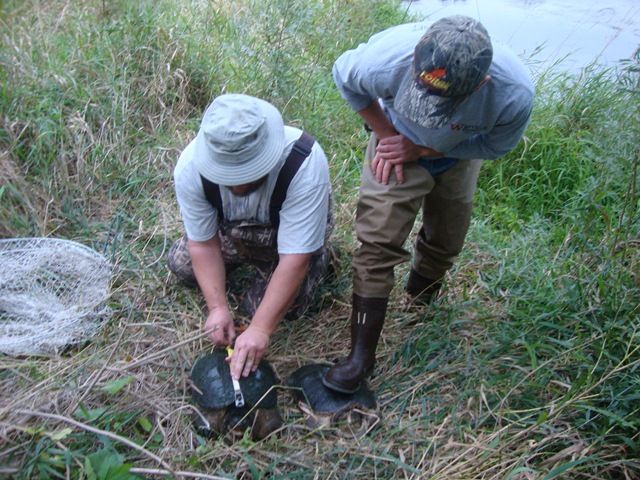
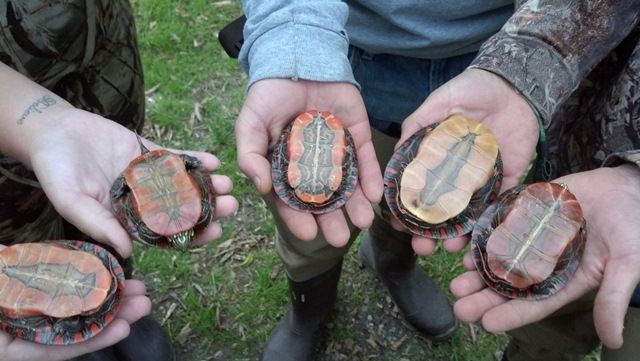
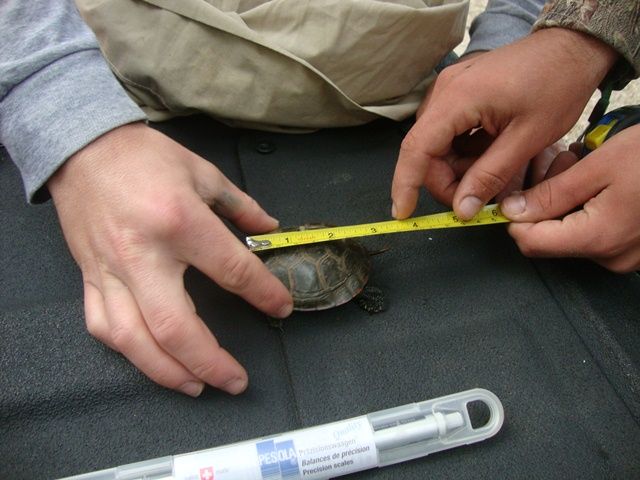
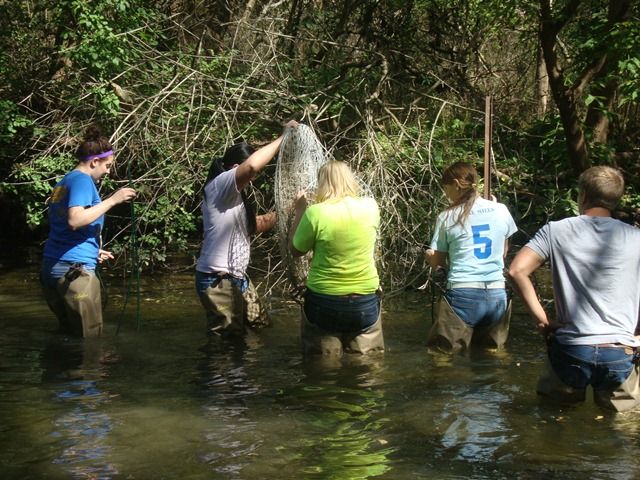

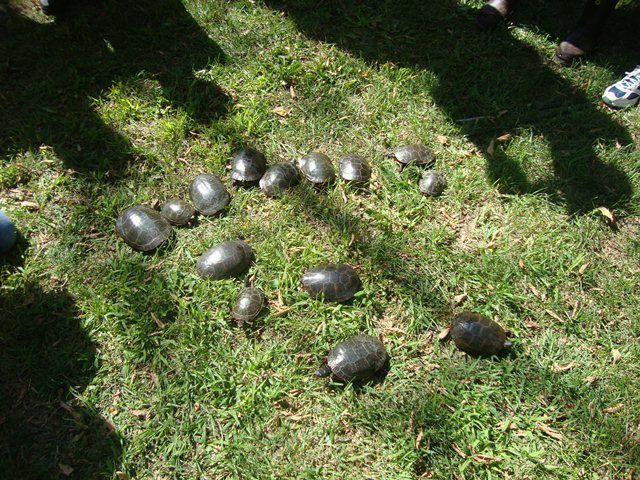

I see 5 little painted turtles or did you decide that only 4 of them were cute and an ugly one didn't count?
ReplyDeleteLooks like a lot of fun though!
Well, the one on the far right isn't as cute as the others.
DeleteFINE....you got me. I was in a rush when I finished this.
Thanks for catching it....correction made! :)
How do you permanently mark the turtles?
ReplyDeleteYou can file a notch in their marginal scutes in a specific order based on what number you want your turtle to be marked. I use a system slightly modified from what Cagle published in the 50s. All scutes moving left from the central or nuchal scute are considered the 10s....and scutes to the right of the nuchal scute are the 1s. If your turtle is number 23, you would file a notch in the second scute to the left of the nuchal scute, and file a notch in the third scute to the right of the nuchal scute.
ReplyDeleteCheap and easy way to mark turtles!
huh, well I'll be darned!
ReplyDelete